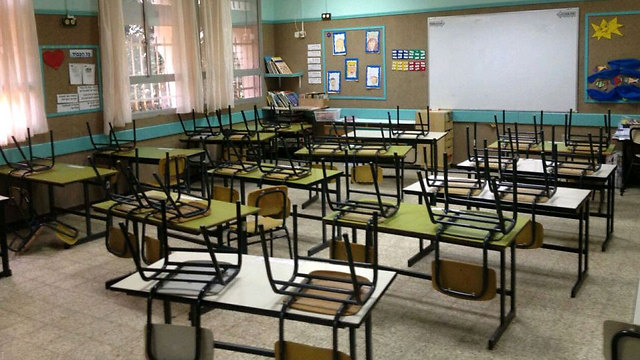
Education Ministry invests more money in isolated settlements
Israel invests NIS 13,000 per student in settlements outside the main blocs, while the national average is NIS 6,500, a new study finds.
The Education Ministry is investing more money in Jewish settlements in the West Bank than it does in other areas of Israel, according to a new study by the Macro Center for Political Economics.
The study found that Israel invests in a Jewish student in settlements outside of the main blocs some NIS 13,000 a year, almost double what it invests in a student in the periphery.
The Macro Center study mapped the investment of resources in the country according to regions, while differentiating between Jewish settlements located west of the separation fence - the main settlement blocs expected to stay part of Israel in any future accord with the Palestinians - and the isolated Jewish settlements located east of the fence.
"The study found that there is a particularly high investment in resources in the Judea and Samaria area, specifically in isolated settlements east of the separation fence," said Dr. Roby Nathanson, the center's director general. "This is a policy of adding jobs and funds to these settlements, on the expense of cities and communities in the north and south that have been defined as 'national priority areas.'"
It is important to note, however, that because of the significantly smaller population in these isolated settlements, there are higher costs for smaller classrooms, bullet-proof school buses and additional costs.
The survey, which uses data gathered from official state reports, found that Israel invests in Jewish students in settlement blocs like Beit El, Kiryat Arba, Hebron, Nokdim and Tekoa - where some 70,000 people live - NIS 12,899 for each student, while the national average is at NIS 6,540 for each student. The state invests NIS 7,788 a year for each student in the Negev and NIS 6,761 in the Galilee. This despite the fact the socio-economic situation in the Jewish West Bank settlements is better - an average of 5.3, compared to 4.6 in the south and only 3.8 in the north.
At Israeli state and state-religious schools in the West Bank, the average number of students per education institution is 37 percent lower than a national average that doesn't include the West Bank, and the average number of students per teacher is 10.7 percent lower.
The study also examined whether the higher funding affects the quality of education. The findings show that the size of an average classroom in the Jewish West Bank settlements is smaller than the national average, with 24 students compared to 26.2. The average in the Negev and Galilee is 24.5 and 24.7 respectively. Meanwhile, in Jewish settlements east of the separation fence, the average is 21.7 students per class.
However, the smaller classrooms and higher funding do not contribute to a rise in eligibility for a high school diploma. In 2013, the national average excluding the West Bank was 57.6 percent, while in Jewish West Bank settlements it was less than 45 percent.
Nathanson explained that the reason for that was a high rate of ultra-Orthodox (haredim) west of the separation fence in settlements like Ma'ale Adumim and Ariel, but also Modi'in Illit, Beitar Illit and Immanuel - a total of 300,000 people - where most students don't take the final exams.
The Jewish settlements east of the border fence, meanwhile, have the highest eligibility rate in Israel, at 68.7 percent. The Negev and Galilee are closer to the national average, at 55 percent and 61.2 percent respectively.
The study also examined how much each percent of high school diploma eligibility "costs." According to the data, in Jewish settlements all over the West Bank, each percent costs the state NIS 262.6. In other areas of the country, the education system is more effective. The national average excluding the West Bank is NIS 176.7, while in national priority areas the average was NIS 152.5 in the Galilee and NIS 198.7 in the Negev.
The Education Ministry said in response that "it is unclear where the data the Marco Center uses came from. The average investment in each student for the 2014-2015 school year is NIS 16,300 per student, compared to NIS 15,500 in the West Bank. The national average of students per classroom is 28, and 27.2 in the West Bank."
Nathanson said that "our data comes from credible sources" - including reports from the Central Bureau of Statistics, the Education, Economy and Finance ministries, and the Israeli Civil Administration. The data, he said, is from 2013, while data for 2014 will be available next month "but no significant change is expected."
"This isn't the first time more resources are allocated to the West Bank. Even the settlers admit the state invests more money in the settlements," he added.











